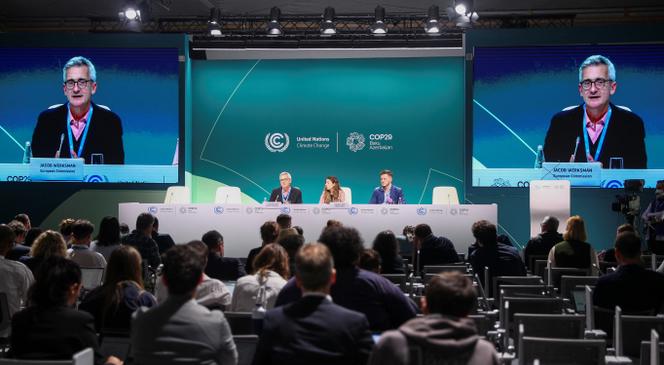


In Baku, negotiators are now faced with a mountain to climb. On Wednesday, November 13, the Egyptian and Australian co-facilitators proposed two still very long versions of the main text for this 29th Conference of the Parties on Climate Change (COP29), the New Collective Quantified Goal (NCQG). In the second, which will serve as the basis for negotiations, 90 options and sub-options remain to be decided. An infinitely complex diplomatic equation on a crucial subject: The aid to be given to developing countries to finance their climate transition.
"We're very worried because there was more than a year's preparation on this text and it was all rejected as a basis for negotiations," commented Jacob Werksman, the European Union's chief negotiator, on Thursday, referring to the first draft that was swept aside by developing countries on Tuesday. "[The text] is still over 30 pages long. We're a long way from the home straight."
In other words, the next few days promise to be perilous for the negotiators from the 197 countries gathered in Azerbaijan. After the departure of the world leaders who spoke on Tuesday and Wednesday, they must now clear the field of alternatives before the arrival of the ministers in the middle of the week of November 18, who will attempt to conclude the negotiations. "We're going to try to leave them with as little to do as possible," hopes Werksman. "We remain optimistic. We can accomplish this task on time."
Regarding the core of the document, in other words the total amount of funding and the sources of the money over the next 10 years, the text puts three major choices on the table. These options reflect the ambitions of the world's major regions. The first largely meets the expectations expressed by developing countries: a quantum of between $1,100 billion and $2,000 billion annually between 2029 and 2035.
Among the myriad of sub-options is a proposal to earmark funding for certain categories of countries ($220 billion for the least developed countries and $39 billion for small island developing states). These proposals seem difficult to accept for some rich countries, particularly when they refer to "burden sharing among developed countries on the basis of historical emissions and gross domestic product per capita." This hypothesis would force the US and the European Union (EU), which have been responsible for the vast majority of greenhouse gas emissions since 1850, to pay a huge price.
You have 54.82% of this article left to read. The rest is for subscribers only.
